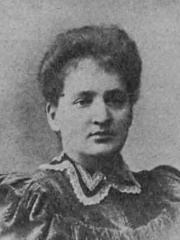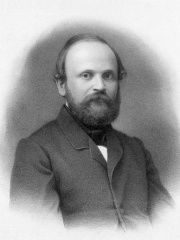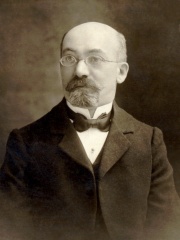
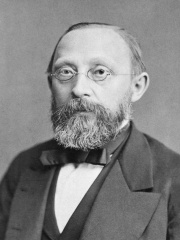
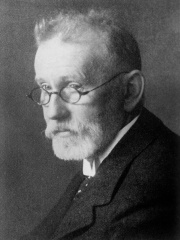
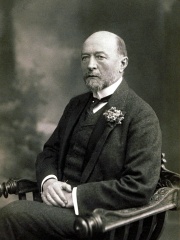
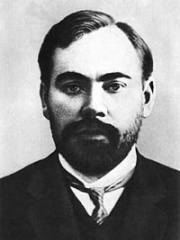
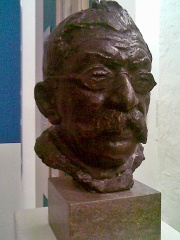
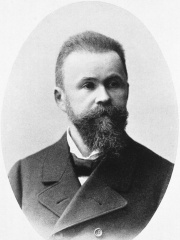
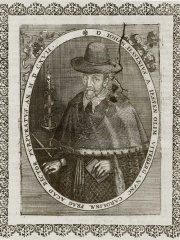
The Most Famous
PHYSICIANS from Poland
This page contains a list of the greatest Polish Physicians. The pantheon dataset contains 726 Physicians, 25 of which were born in Poland. This makes Poland the birth place of the 6th most number of Physicians behind France, and Italy.
Top 10
The following people are considered by Pantheon to be the top 10 most legendary Polish Physicians of all time. This list of famous Polish Physicians is sorted by HPI (Historical Popularity Index), a metric that aggregates information on a biography's online popularity. Visit the rankings page to view the entire list of Polish Physicians.

1. L. L. Zamenhof (1859 - 1917)
With an HPI of 82.06, L. L. Zamenhof is the most famous Polish Physician. His biography has been translated into 115 different languages on wikipedia.
L. L. Zamenhof (15 December 1859 – 14 April 1917) was the creator of Esperanto, the most widely used constructed international auxiliary language. Zamenhof published Esperanto in 1887, although his initial ideas date back as far as 1873. He grew up fascinated by the idea of a world without war and believed that this could happen with the help of a new international auxiliary language (IAL). The language was intended as a tool to gather people together through neutral, fair, equitable communication. He successfully formed a community which has survived to this day, despite the World Wars of the 20th century and various attempts to reform the language or create more modern IALs (Esperanto itself had displaced another similarly-motivated language, Volapük). Additionally, Esperanto has developed like other languages: through the interaction and creativity of its users. In light of his achievements, and his support of intercultural dialogue, UNESCO selected Zamenhof as one of its eminent personalities of 2017, on the 100th anniversary of his death. According to Esperanto communities, as of 2019 there are approximately 2 million people speaking Esperanto, including approximately 1,000 native speakers, although evidence to that has been heavily disputed, and the last major effort to improve the estimate occurred in 2004.

2. Rudolf Virchow (1821 - 1902)
With an HPI of 75.97, Rudolf Virchow is the 2nd most famous Polish Physician. His biography has been translated into 61 different languages.
Rudolf Ludwig Carl Virchow ( VEER-koh, FEER-khoh; German: [ˈʁuːdɔlf ˈvɪʁço, - ˈfɪʁço]; 13 October 1821 – 5 September 1902) was a German physician, anthropologist, pathologist, prehistorian, biologist, writer, editor, and politician. He is known as "the father of modern pathology" and as the founder of social medicine, and to his colleagues, the "Pope of medicine". Virchow studied medicine at the Friedrich Wilhelm University under Johannes Peter Müller. While working at the Charité hospital, his investigation of the 1847–1848 typhus epidemic in Upper Silesia laid the foundation for public health in Germany, and paved his political and social careers. From it, he coined a well known aphorism: "Medicine is a social science, and politics is nothing else but medicine on a large scale". His participation in the Revolution of 1848 led to his expulsion from Charité the next year. He then published a newspaper Die Medizinische Reform (The Medical Reform). He took the first Chair of Pathological Anatomy at the University of Würzburg in 1849. After seven years, in 1856, Charité reinstated him to its new Institute for Pathology. He co-founded the political party Deutsche Fortschrittspartei, and was elected to the Prussian House of Representatives and won a seat in the Reichstag. His opposition to Otto von Bismarck's financial policy resulted in duel challenge by the latter. However, Virchow supported Bismarck in his anti-Catholic campaigns, which he named Kulturkampf ("culture struggle"). A prolific writer, he produced more than 2000 scientific writings. Cellular Pathology (1858), regarded as the root of modern pathology, introduced the third dictum in cell theory: Omnis cellula e cellula ("All cells come from cells"), although this concept is now widely recognized as being plagiarized from Robert Remak. He was a co-founder of Physikalisch-Medizinische Gesellschaft in 1849 and Deutsche Gesellschaft für Pathologie in 1897. He founded journals such as Archiv für Pathologische Anatomie und Physiologie und für Klinische Medicin (with Benno Reinhardt in 1847, later renamed Virchows Archiv), and Zeitschrift für Ethnologie (Journal of Ethnology). The latter is published by German Anthropological Association and the Berlin Society for Anthropology, Ethnology and Prehistory, the societies which he also founded. Virchow was the first to describe and name diseases such as leukemia, chordoma, ochronosis, embolism, and thrombosis. He coined biological terms such as "neuroglia", "agenesis", "parenchyma", "osteoid", "amyloid degeneration", and "spina bifida"; terms such as Virchow's node, Virchow–Robin spaces, Virchow–Seckel syndrome, and Virchow's triad are named after him. His description of the life cycle of a roundworm Trichinella spiralis influenced the practice of meat inspection. He developed the first systematic method of autopsy, and introduced hair analysis in forensic investigation. Opposing the germ theory of diseases, he rejected Ignaz Semmelweis's idea of disinfecting. He was critical of what he described as "Nordic mysticism" regarding the Aryan race. As an anti-Darwinist, he called Charles Darwin an "ignoramus" and his own student Ernst Haeckel a "fool". He described the original specimen of Neanderthal man as nothing but that of a deformed human.

3. Paul Ehrlich (1854 - 1915)
With an HPI of 75.73, Paul Ehrlich is the 3rd most famous Polish Physician. His biography has been translated into 80 different languages.
Paul Ehrlich (German: [ˈpaʊl ˈʔeːɐ̯lɪç] ; 14 March 1854 – 20 August 1915) was a Nobel Prize-winning German physician and scientist who worked in the fields of hematology, immunology and antimicrobial chemotherapy. Among his foremost achievements were finding a cure for syphilis in 1909 and inventing an important modification of the technique for Gram staining bacteria. The methods he developed for staining tissue made it possible to distinguish between different types of blood cells, which led to the ability to diagnose numerous blood diseases. His laboratory discovered arsphenamine (Salvarsan), the first antimicrobial drug and first effective medicinal treatment for syphilis, thereby initiating and also naming the concept of chemotherapy. Ehrlich introduced the concept of a magic bullet. He also made a decisive contribution to the development of an antiserum to combat diphtheria and conceived a method for standardising therapeutic serums. In 1908, he received the Nobel Prize in Physiology or Medicine for his contributions to immunology. He was the founder and first director of the Paul Ehrlich Institute, a German research institution and medical regulatory body named for him in 1947, that is the nation's federal institute for vaccines and biomedicines. A genus of Rickettsiales bacteria, Ehrlichia, is named after him. Ehrlich has been called "father of immunology".

4. Emil von Behring (1854 - 1917)
With an HPI of 74.21, Emil von Behring is the 4th most famous Polish Physician. His biography has been translated into 84 different languages.
Emil von Behring (German: [ˈeːmiːl fɔn ˈbeːʁɪŋ] ; Emil Adolf von Behring: born Emil Adolf Behring; 15 March 1854 – 31 March 1917), was a German physiologist who received the 1901 Nobel Prize in Physiology or Medicine, the first one awarded in that field, for his discovery of a diphtheria antitoxin. He was widely known as a "saviour of children", as diphtheria used to be a major cause of child death. His work with the disease, as well as tetanus, has come to bring him most of his fame and acknowledgment. He was honoured with Prussian nobility in 1901, henceforth being known by the surname "von Behring".
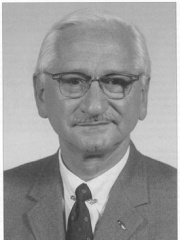
5. Albert Sabin (1906 - 1993)
With an HPI of 70.81, Albert Sabin is the 5th most famous Polish Physician. His biography has been translated into 46 different languages.
Albert Bruce Sabin ( SAY-bin; born Abram Saperstejn; August 26, 1906 – March 3, 1993) was a Polish-American medical researcher, best known for developing the oral polio vaccine, which has played a key role in nearly eradicating the disease. In 1969–1972, he served as the president of the Weizmann Institute of Science in Israel.

6. Alexander Bogdanov (1873 - 1928)
With an HPI of 70.50, Alexander Bogdanov is the 6th most famous Polish Physician. His biography has been translated into 36 different languages.
Alexander Aleksandrovich Bogdanov (Russian: Александр Александрович Богданов; 22 August 1873 [O.S. 10 August] – 7 April 1928), born Alexander Malinovsky, was a Russian and later Soviet physician, philosopher, science fiction writer, and Bolshevik revolutionary. He was a polymath who pioneered blood transfusion, as well as general systems theory, and made important contributions to cybernetics. He was a key figure in the early history of the Russian Social Democratic Labor Party (later the Communist Party of the Soviet Union), originally established 1898, and of its Bolshevik faction. In 1904–1906, he published three volumes of the philosophic treatise Empiriomonizm (Empiriomonism), in which he tried to merge Marxism with the philosophy of Ernst Mach, Wilhelm Ostwald, and Richard Avenarius. His work later affected a number of Russian Marxist theoreticians, including Nikolai Bukharin and Dov Ber Borochov. Bogdanov co-founded the Bolsheviks in 1903, when they split with the Menshevik faction. He was a rival within the Bolsheviks to Vladimir Lenin (1870–1924), Lenin concentrated on undermining Bogdanov's reputation as a philosopher. In 1909 he published a scathing book of criticism entitled Materialism and Empiriocriticism, assaulting Bogdanov's position and accusing him of philosophical idealism. In June 1909, Bogdanov was defeated by Lenin at a Bolshevik mini-conference in Paris organized by the editorial board of the Bolshevik magazine Proletary and was expelled from the Bolsheviks. He subsequently established his own faction Vpered. Following the Russian Revolutions of 1917, when the Bolsheviks came to power in the collapsing Russian Republic, he was an influential critic of the Bolshevik government and Lenin from a Marxist leftist perspective during the first decade of the subsequent Soviet Union in the 1920s. Bogdanov received training in medicine and psychiatry. His wide scientific and medical interests ranged from the universal systems theory to the possibility of human rejuvenation through blood transfusion. He invented an original philosophy called "tectology", now regarded as a forerunner of systems theory. He was also an economist, culture theorist, science fiction writer, and political activist. Lenin depicted him as one of the "Russian Machists".

7. Magnus Hirschfeld (1868 - 1935)
With an HPI of 68.15, Magnus Hirschfeld is the 7th most famous Polish Physician. His biography has been translated into 43 different languages.
Magnus Hirschfeld (14 May 1868 – 14 May 1935) was a German physician, sexologist, and LGBTQ advocate whose German citizenship was revoked in 1933 by the Nazi government. Hirschfeld was educated in philosophy, philology, and medicine. An outspoken advocate for sexual minorities, he founded the Scientific-Humanitarian Committee and the World League for Sexual Reform. During the 1920s he based his practice in Berlin-Charlottenburg. His Committee carried out "the first advocacy for homosexual and transgender rights". Hirschfeld is regarded as one of the most influential 20th-century sexologists. He was targeted by early fascists, and later by the Nazis, for being Jewish and gay. He was beaten by völkisch activists in 1920, and in 1933 his Institut für Sexualwissenschaft was looted and its books burned by Nazis. He was forced into exile in France, where he died in 1935.

8. Carl Wernicke (1848 - 1905)
With an HPI of 68.05, Carl Wernicke is the 8th most famous Polish Physician. His biography has been translated into 28 different languages.
Carl (or Karl) Wernicke (; German: [ˈvɛɐ̯nɪkə]; 15 May 1848 – 15 June 1905) was a German physician, anatomist, psychiatrist and neuropathologist. He is known for his influential research into the pathological effects of specific forms of encephalopathy and also the study of receptive aphasia, both of which are commonly associated with Wernicke's name and referred to as Wernicke encephalopathy and Wernicke's aphasia, respectively. His research, along with that of Paul Broca, led to groundbreaking realizations of the localization of brain function, specifically in speech. As such, Wernicke's area (a.k.a. Wernicke's Speech Area) has been named after the scientist.

9. Jan Jesenius (1566 - 1621)
With an HPI of 63.40, Jan Jesenius is the 9th most famous Polish Physician. His biography has been translated into 18 different languages.
Jan Jesenius, also written as Jessenius (German: Johannes Jessenius, Hungarian: Jeszenszky János, Slovak: Ján Jesenský; 27 December 1566 – 21 June 1621), was a Bohemian physician, anatomist, politician and philosopher. He was active in Prague, where he gained fame after he conducted a public dissection of a human body for scientific purposes. He was publicly executed following the Battle of White Mountain.
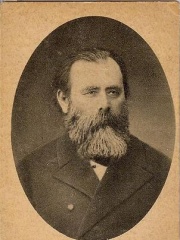
10. Leon Pinsker (1821 - 1891)
With an HPI of 62.66, Leon Pinsker is the 10th most famous Polish Physician. His biography has been translated into 19 different languages.
Leon Pinsker or Judah Leib Pinsker (Hebrew: יהודה לייב פינסקר; Russian: Йехуда Лейб Пинскер; 25 December [O.S. 13 December] 1821 – 21 December [O.S. 9 December] 1891) was a physician and Zionist activist. He was born in the town of Tomaszów Lubelski in the southeastern border region of the Kingdom of Poland, and educated in Odessa, where he studied law but was unable to practice because of restrictions on occupations available to Jews. Earlier in life he had originally supported the cultural assimilation of Jews in the Russian Empire. Pinsker was a supporter of equal rights under the law for Jews, but his optimism was curtailed after the Odessa Pogroms. In response to the pogroms of 1871 and 1881, Pinsker founded the Zionist organization Hibbat Zion in 1881. Political disagreements between religious and secular factions of the Odessa Committee, and Ottoman restriction on Jewish emigration, prevented Pinsker from resettling, and he died in Odessa in 1891. His remains were brought to Jerusalem in 1934.
People
Pantheon has 25 people classified as Polish physicians born between 1566 and 1916. Of these 25, none of them are still alive today. The most famous deceased Polish physicians include L. L. Zamenhof, Rudolf Virchow, and Paul Ehrlich.
Deceased Polish Physicians
Go to all RankingsL. L. Zamenhof
1859 - 1917
HPI: 82.06
Rudolf Virchow
1821 - 1902
HPI: 75.97
Paul Ehrlich
1854 - 1915
HPI: 75.73
Emil von Behring
1854 - 1917
HPI: 74.21
Albert Sabin
1906 - 1993
HPI: 70.81
Alexander Bogdanov
1873 - 1928
HPI: 70.50
Magnus Hirschfeld
1868 - 1935
HPI: 68.15
Carl Wernicke
1848 - 1905
HPI: 68.05
Jan Jesenius
1566 - 1621
HPI: 63.40
Leon Pinsker
1821 - 1891
HPI: 62.66
Bronisława Dłuska
1865 - 1939
HPI: 62.57
Robert Remak
1815 - 1865
HPI: 61.81
Overlapping Lives
Which Physicians were alive at the same time? This visualization shows the lifespans of the 24 most globally memorable Physicians since 1700.

